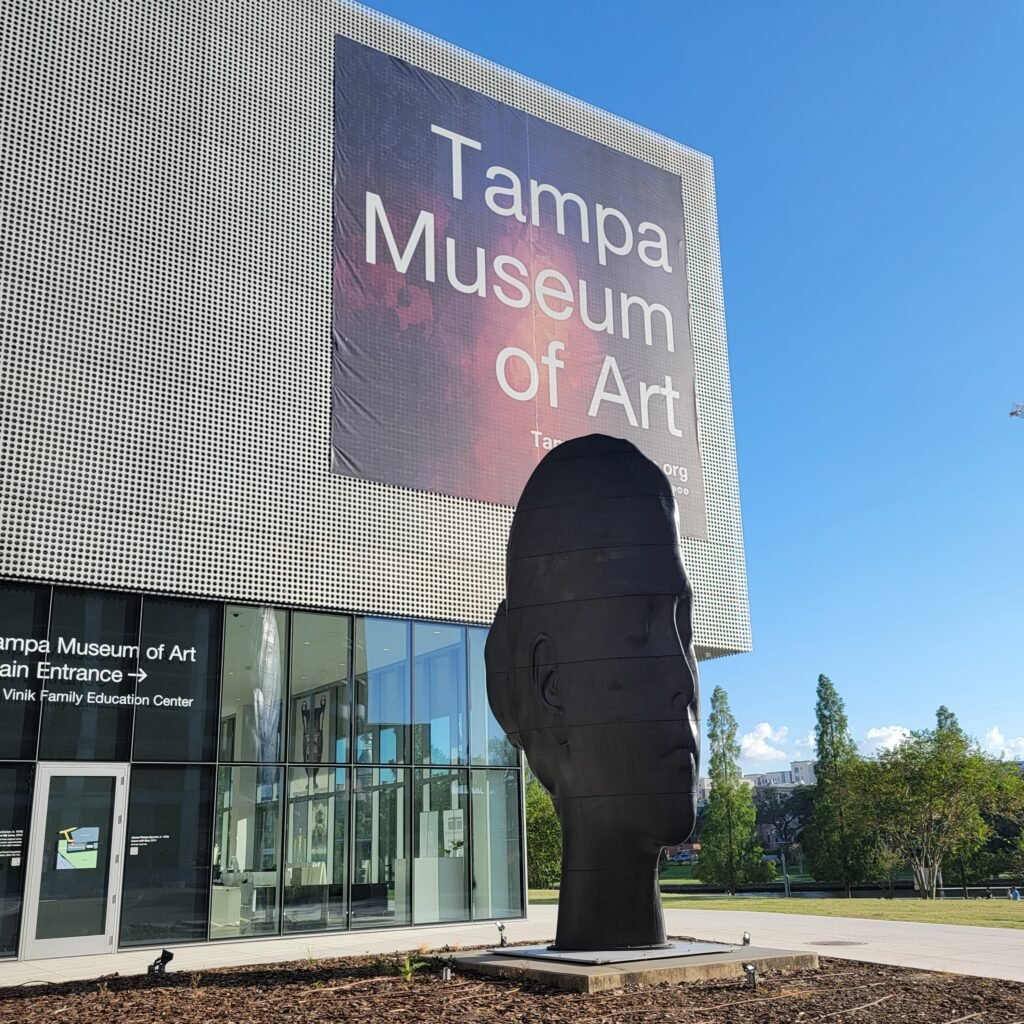Tampa Bay has a number of cultural institutions to choose from. The city is home to several prominent museums and galleries that showcase a wide range of art styles and mediums.
For the fine arts, there is the Tampa Museum of Art which features contemporary and classical art collections.
For history buffs you have the American Victory Ship, a working World War II cargo ship, the Henry B. Plant Museum, which shows the original Tampa Bay Hotel and Tampa’s growth from sleepy village to tourist Mecca and the Tampa History Center which covers much of Tampa history from the indigenous people, to pirates, to cigar makers and oranges.
Also if you have the time to take a little trip to St. Petersburg (about 1 hour away) you can visit the Museum of Fine Arts a diverse collection of art spanning thousands of years and the Dalí Museum, dedicated to the works of the renowned surrealist artist Salvador Dalí.
Tampa Art Gallery
The Tampa Museum of Art is a vibrant and inclusive institution that celebrates the transformative power of art. Through its diverse collection, engaging exhibitions, and community programs, it offers visitors an enriching and immersive artistic experience.
The museum is situated along the banks of the Hillsborough River and the building itself is a stunning work of art, designed by architect Stanley Saitowitz, with its sleek, modern exterior featuring a striking aluminum facade. The design incorporates natural light through expansive windows and skylights, creating an inviting and well-lit space for visitors.

Inside, the Tampa Museum of Art houses a diverse collection of artwork spanning various periods and mediums. The museum’s permanent collection includes works from ancient to contemporary art, with a particular focus on modern and contemporary art. Visitors can explore paintings, sculptures, photography, and new media installations, among other art forms.


The museum also hosts several temporary exhibitions throughout the year, showcasing the works of both established and emerging artists. These exhibitions cover a wide range of themes and artistic styles, providing visitors with a dynamic and ever-changing artistic experience.

Apart from its exhibition spaces, the Tampa Museum of Art offers educational programs and workshops for visitors of all ages.
It hosts various events, lectures, and performances that bring together artists, scholars, and art enthusiasts. The museum’s location along the Riverwalk provides visitors with scenic views and easy access to other attractions and amenities in downtown Tampa.

Tampa Bay History Center
The Tampa Bay History Center is a museum and cultural institution located in downtown Tampa. It offers an immersive and educational experience that highlights the captivating history of the Tampa Bay region.
The History Center is situated along the waterfront, offering picturesque views of the Hillsborough River and the surrounding area. The building itself is a modern architectural masterpiece, designed to reflect the region’s maritime influences. Its distinctive design incorporates glass, steel, and limestone, creating a visually striking and inviting space.
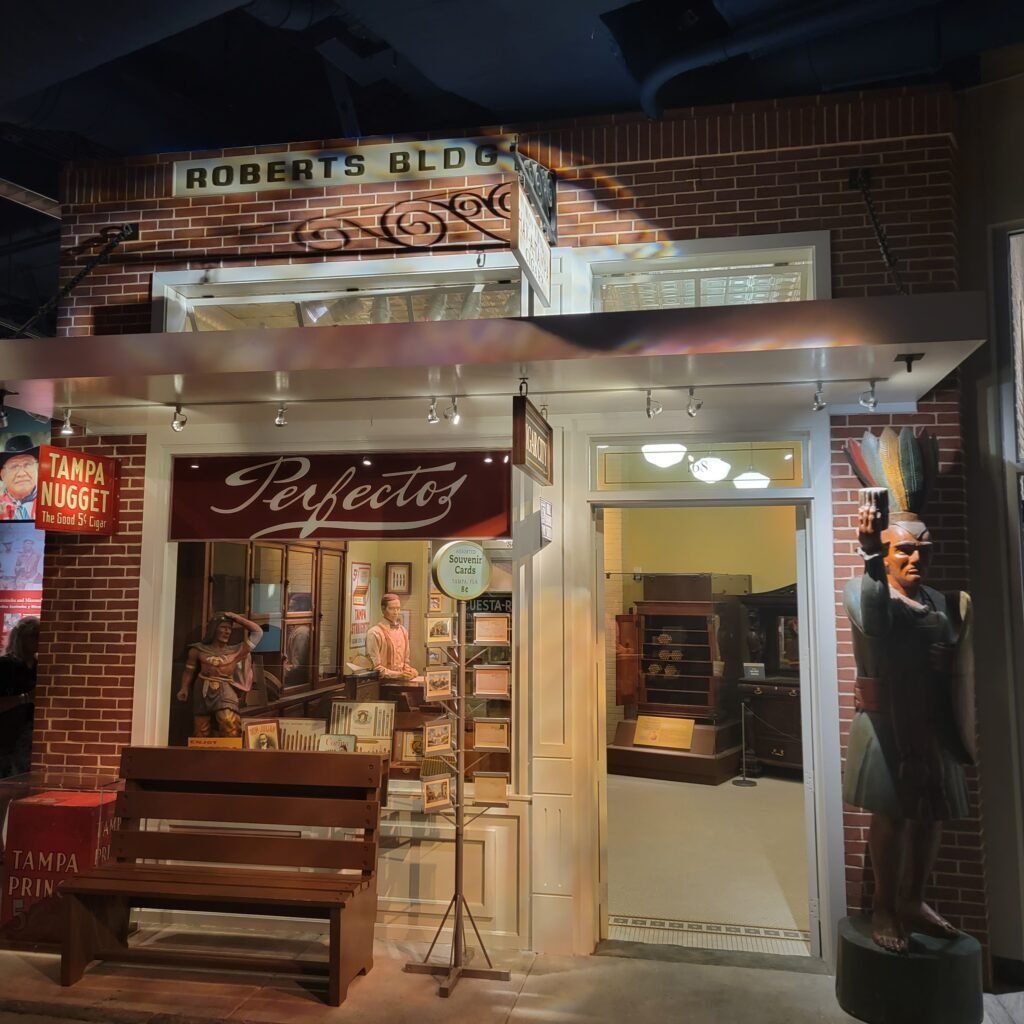
The museum offers a comprehensive overview of Tampa’s past, from its Native American inhabitants and Spanish colonial period to its growth as a major port city and its significance during the cigar industry boom.
The exhibits at the History Center are engaging and interactive, utilizing multimedia presentations, artifacts, photographs, and personal stories to bring the history to life. Visitors can learn about Tampa’s diverse cultural heritage, its role in the development of the cigar industry, the impact of the railroad and shipping industries, as well as its connections to military history and the sports legacy of the region.

The museum also features temporary exhibitions that delve into specific aspects of Tampa Bay’s history, allowing for a fresh and ever-changing experience with each visit. These exhibits may focus on topics such as art, architecture, social movements, or specific periods of history.
American Victory Museum
The American Victory Ship is a historic World War II-era cargo ship that is now preserved as a museum ship. It is officially known as the SS American Victory and is one of only four fully operational Victory ships in the United States.
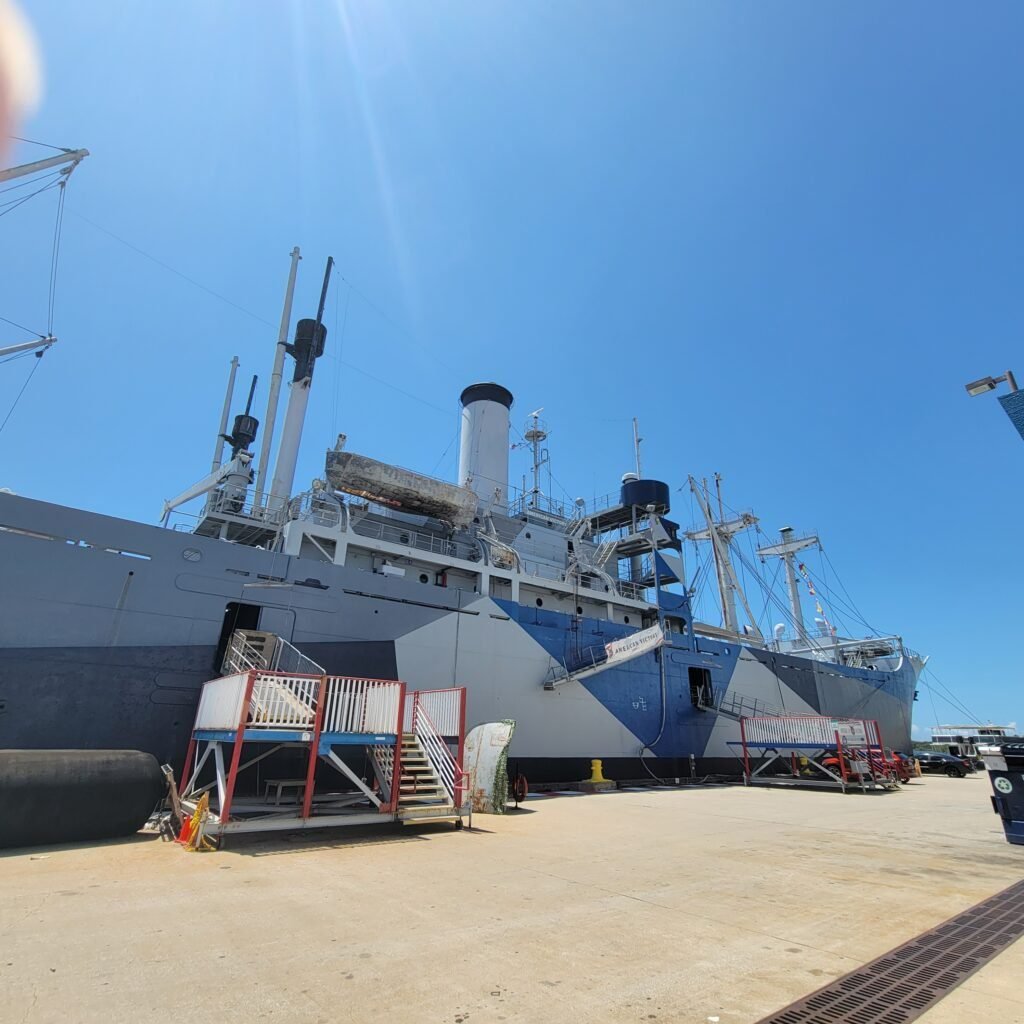
The ship was built in 1945 by the California Shipbuilding Corporation in Los Angeles, California. It was part of a series of cargo ships known as Victory ships, which were constructed during World War II to support the war effort. The SS American Victory played a crucial role in transporting troops, equipment, and supplies to the front lines.
After the war, the American Victory Ship was briefly used for commercial purposes before being laid up in the National Defense Reserve Fleet.
Today, the American Victory Ship is open to the public as a floating museum and memorial. Visitors have the opportunity to explore the ship and gain a unique insight into the daily life of mariners during World War II. The museum showcases various aspects of the ship, including its cargo holds, crew quarters, engine room, bridge, and the wheelhouse.
The ship’s exhibits and displays provide a glimpse into the history and operations of Victory ships, highlighting their role in supporting the war effort. Visitors can learn about the challenges faced by the crew, the importance of cargo shipping during wartime, and the impact of World War II on global maritime trade.
The American Victory Ship also hosts special events, educational programs, and guided tours for visitors of all ages. These activities offer a hands-on experience and further enhance the understanding of the ship’s history and significance.

As a living testament to America’s maritime heritage, the American Victory Ship stands as a symbol of courage, resilience, and the sacrifices made by the men and women who served during World War II. Its preservation as a museum ship allows visitors to appreciate the historical significance of these vessels and the critical role they played in shaping the world we live in today.
Its located behind the Florida Aquarium so easy to do both the same day. The tour of the ship should take about 30 minutes.
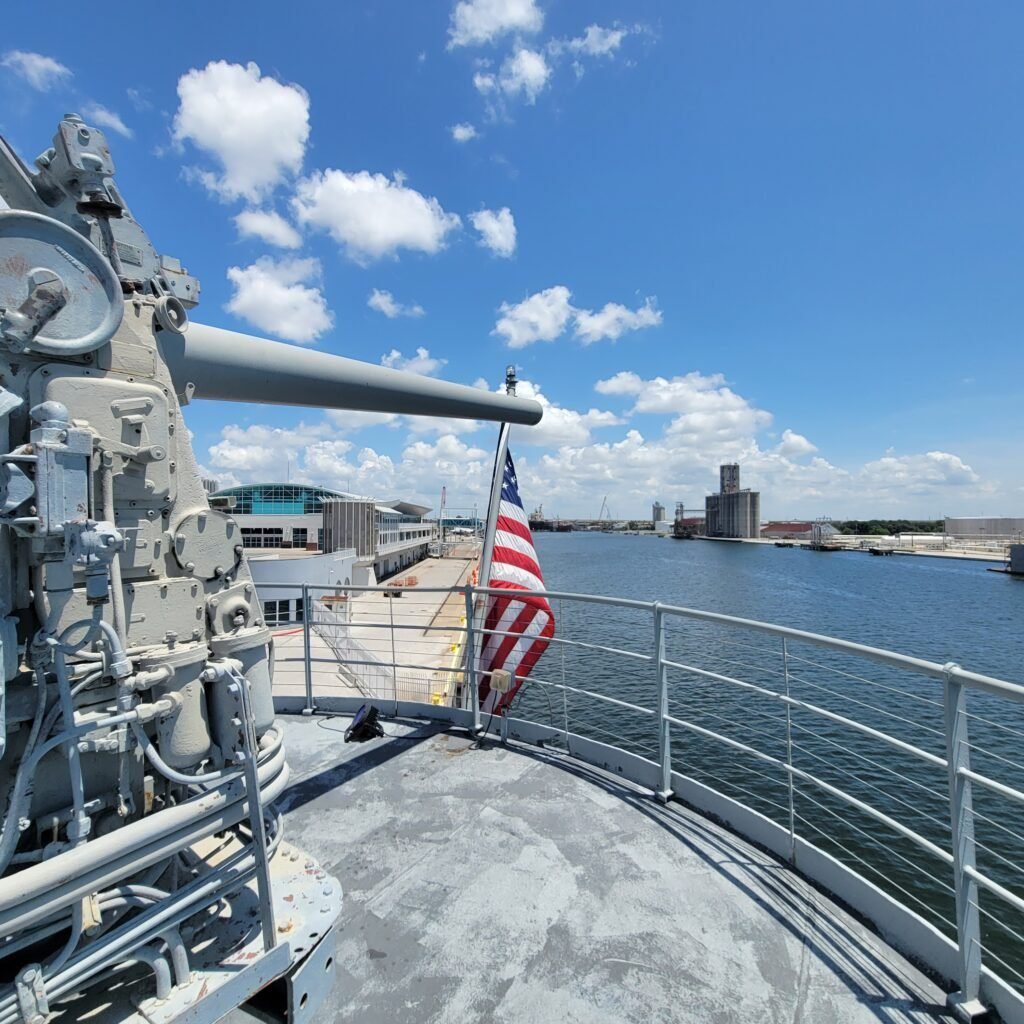
Henry B. Plant Museum
The Henry B. Plant Museum is a historic museum located on the campus of the University of Tampa. Housed in the iconic former Tampa Bay Hotel, the museum offers a glimpse into the Gilded Age and the opulence of the late 19th and early 20th centuries.
Through its historic setting, period rooms and exhibits, the museum provides visitors with a unique glimpse into Tampa’s past and the legacy of Henry B. Plant’s vision for the city.

The Tampa Bay Hotel, now known as Plant Hall, was built by railroad and hotel magnate Henry B. Plant in the late 1800s. Plant’s vision was to create a luxury resort that would attract visitors to Tampa and showcase the city’s potential as a tourist destination. The hotel’s architecture reflects a mix of Moorish and Victorian influences, with its distinctive minarets, towers, and ornate details.
The Henry B. Plant Museum preserves and interprets the history of the Tampa Bay Hotel and its role in shaping Tampa’s development. The museum’s exhibits are spread across three floors, each filled with period rooms, artifacts, and displays that transport visitors back in time.
The first floor of the museum features the Grand Hall, adorned with beautiful tilework and filled with antique furniture, portraits, and decorative objects from the Gilded Age. This area also includes the museum store, where visitors can purchase unique gifts and souvenirs.

The second floor showcases the hotel’s former guest rooms, which have been meticulously restored to their original splendor. Each room represents a different theme or function, such as the Music Room, the Writing Room, and the Moorish Room. Visitors can marvel at the exquisite period furnishings, artwork, and décor, immersing themselves in the luxurious ambiance of the past.
The third floor of the Henry B. Plant Museum houses temporary exhibits that explore various aspects of Tampa’s history, as well as the life and achievements of Henry B. Plant. These exhibits may focus on topics such as the hotel’s impact on Tampa’s growth, the cigar industry, or the local community.
Throughout the museum, interactive displays, audiovisual presentations, and informative panels provide visitors with in-depth insights into the hotel’s history and the era in which it thrived. Guided tours are available to enhance the visitor experience and offer additional context and stories behind the artifacts and rooms.
The surrounding grounds of the museum feature lush gardens, courtyards, and a picturesque veranda, offering a peaceful and scenic environment. Visitors can take leisurely strolls through the beautifully landscaped gardens and imagine what it must have been like during the hotel’s heyday.
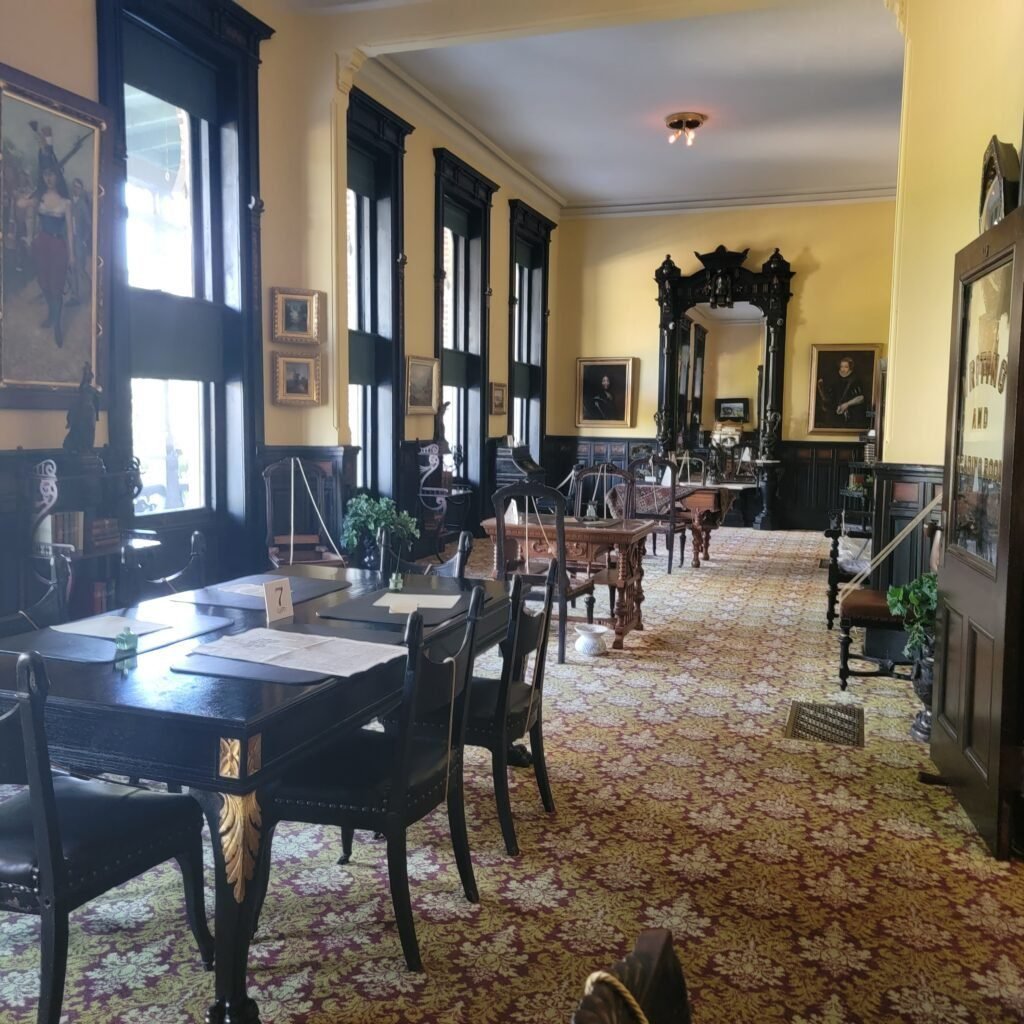
Conclusion
Tampa Bay has a number of great cultural institutions to enjoy. Most are downtown or along the Tampa River walk making it easy and enjoyable going from one to the other. Hope this helps you plan you itinerary.
Let me know if you have any questions or comments.

